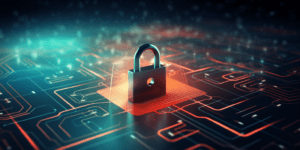Introduction
Blockchain technology is rewriting the rules of ownership and investment by introducing the concept of Tokenization of Assets. In this comprehensive exploration, we’ll delve into how blockchain is transforming ownership, creating liquidity, and expanding investment opportunities across various asset classes. The era of asset tokenization is here, and it’s revolutionizing the way we perceive and interact with investments.
Chapter 1: Understanding Asset Tokenization
Before we explore the impact, let’s understand the basics:
- What Is Asset Tokenization: Get to know the concept of asset tokenization and how blockchain is used to represent ownership in a digital form.
- The Tokenization Process: Learn about the steps involved in tokenizing real-world assets, from issuance to trading.
Chapter 2: Real Estate Tokenization
Real estate is one of the primary sectors benefiting from asset tokenization:
- Real Estate Tokenization Benefits: Discover how tokenization is making real estate investment more accessible, liquid, and cost-effective.
- Case Studies: Explore real-world examples of tokenized real estate projects and their impact on the market.
Chapter 3: Tokenization of Art and Collectibles
The art and collectibles market is undergoing a transformation:
- Art on the Blockchain: Understand how artists and collectors are leveraging blockchain to tokenize art pieces and create new marketplaces.
- Liquidity and Fractional Ownership: Explore how tokenization allows for fractional ownership and increased liquidity in the art market.
Chapter 4: Tokenization of Securities
Tokenization is reshaping the securities market:
- Benefits of Security Tokenization: Learn about the advantages of tokenized securities, including faster settlement times and increased market accessibility.
- Regulatory Considerations: Explore the evolving regulatory landscape surrounding tokenized securities.
Chapter 5: Challenges and Risks
As with any innovation, asset tokenization presents challenges:
- Regulatory Complexity: Understand the complexity of blockchain-based assets in terms of regulations and compliance.
- Security and Custody: Examine the security challenges and custody solutions in the world of asset tokenization.
Chapter 6: The Future of Asset Tokenization
The future of asset tokenization is promising:
- More Asset Classes: Discover the potential for tokenizing a broader range of assets, from intellectual property to commodities.
- Global Accessibility: Explore how asset tokenization can provide global access to investments and wealth creation.
- Interoperability: Learn about the development of cross-chain solutions to enhance interoperability.
Conclusion
Asset tokenization is not merely a trend but a transformative force in the world of finance and investment. The ability to convert real-world assets into digital tokens is changing the game, providing opportunities for investors, creators, and markets that were once out of reach.
As we move forward, it is vital to stay informed about the evolving landscape of asset tokenization, exercise diligence in navigating the regulatory environment, and explore the diverse investment opportunities this technology offers.
For a more in-depth understanding of asset tokenization, its impact on various asset classes, and the limitless potential of blockchain technology, visit Cryptopulse Hub for additional resources and comprehensive analysis.







